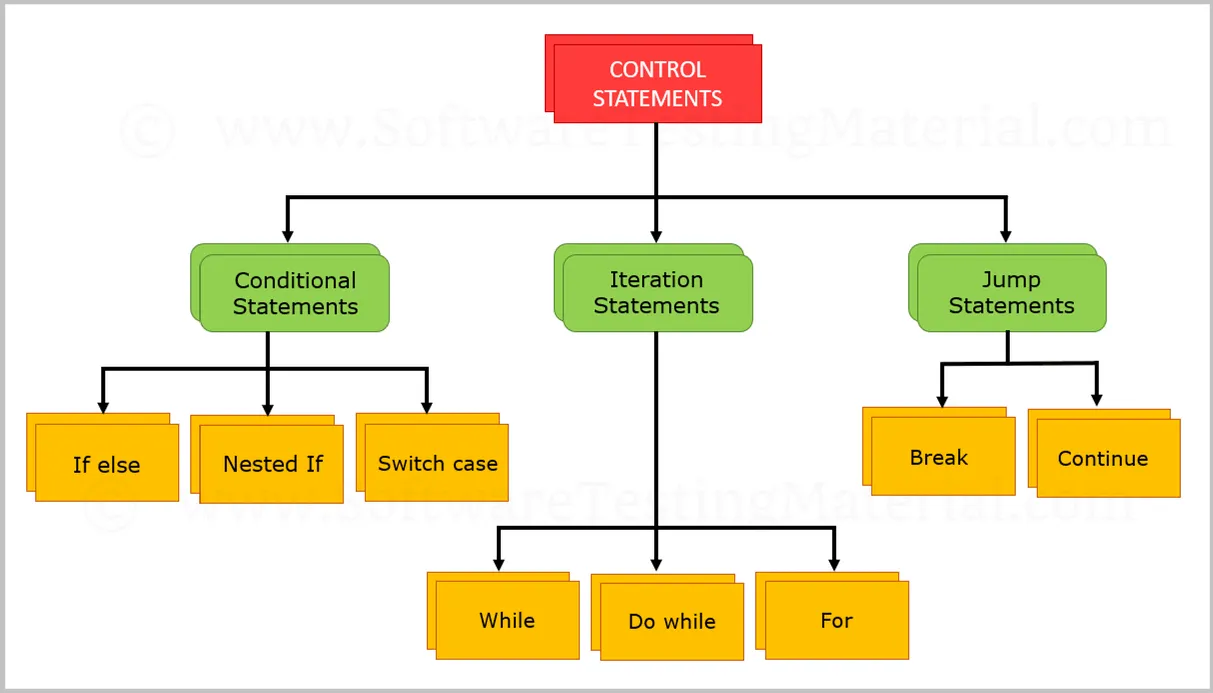 Control structures are fundamental components of programming that provide the framework for controlling a program's flow. They fall into three primary categories: control structures for selection, repetition, and sequencing. The order in which instructions are executed is determined by the sequence control structure. On the other hand, selection control structures facilitate decision-making by assessing conditions and executing particular code blocks in response to the results. When a condition is met, repetition control structures—which are typically implemented using loops—allow code to run more than once.
Control structures are fundamental components of programming that provide the framework for controlling a program's flow. They fall into three primary categories: control structures for selection, repetition, and sequencing. The order in which instructions are executed is determined by the sequence control structure. On the other hand, selection control structures facilitate decision-making by assessing conditions and executing particular code blocks in response to the results. When a condition is met, repetition control structures—which are typically implemented using loops—allow code to run more than once.
In these control structures, relational operators are essential because they make it easier to compare two values or expressions. These operators aid in decision-making by returning boolean values (true or false) depending on the outcome of the comparison. Equal to (==), not equal to (!=), less than (), greater than (>), less than or equal to (=), and greater than or equal to (>=) are examples of common relational operators.
Boolean values are crucial for conditional statements and decision-making processes, and logical operators are necessary for working with them. Logical AND (&&), logical OR (||), and logical NOT (!) are the most often used logical operators. They are used to combine and modify conditions inside of if statements and while loops to form sophisticated control structures.
In many programming languages, compound statements—which are surrounded in curly brackets ({})—group several statements into a single unit. These are especially helpful for keeping code organized and making sure that a series of statements—usually included within control structures—are executed as a single unit.
While loops are a kind of repetition control structure that, as long as a particular condition is met, repeatedly runs a block of code. While loops come in many forms: counter-controlled loops, which run a certain number of times based on a counter variable; flag-controlled loops, which run the loop based on a boolean flag; and EOF-controlled loops, which are frequently used to read data from files until the "End of File" marker is reached. Sentinel-controlled loops, on the other hand, run continuously until a predefined "sentinel" value is encountered.
An indispensable method for ending a loop early, even if the loop condition is still met, is the break statement. It is applied when an early loop termination is required and a certain condition is satisfied. On the other hand, the continue statement is used to advance to the subsequent iteration of a loop by ignoring the current iteration. When a particular circumstance is satisfied and you wish to skip the current iteration without completely ending the loop, this is helpful.
In conclusion, the fundamental building blocks of programming are control structures, relational operators, logical operators, compound statements, and different kinds of while loops. These allow programmers to make choices, manage the flow of their programs, and write organized, effective code. Within loops, the break and continue statements provide more control by enabling early exit or iteration skipping. Creating solid and effective programs requires a thorough understanding of and application of these concepts.!
Posted using Honouree